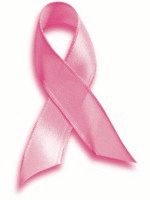
Prostate Cancer is the most common internal organ malignancy in men in the United States. Every year, over 30,000 men die from complications of prostate cancer, making it the second leading cause of cancer death after lung cancer in men. All signs point to it being one of the most important cancers for doctors to discuss with their patients and to catch early.
And yet the American Cancer Society (ACS) and the United States Preventive Services Task Force (USPSTF) do not recommend routine blood testing for prostate cancer screening – even though it is effective at detecting cancer early. Why would these groups not recommend screening, in that case? It would seem to be a “common-sense” issue to most patients that an early catch equals an early cure. However, with prostate cancer, the situation is much more complicated.
An early American study published recently found that annual use of blood testing and digital exams (where a doctor physically searches for abnormalities with a finger) detected prostate cancer early, but did not lower the death rate from this malignancy. And while a recent large, well-structured study from Europe found a small benefit of blood testing, on the other hand a preliminary result of a large prostate cancer screening trial published in the New England Journal of Medicine in March 2009 showed no survival benefit from screening.
What this means is that while we don’t have much evidence that catching early prostate cancer allows us to do much about it. Furthermore, there is controversy over whether screening in older men, who might die other natural causes before the cancer took its toll, is actually improving quality of lives or simply encouraging them to undergo difficult treatment that is unlikely to extend their lifespan.
Most doctors still believe that catching early prostate cancer can save lives, and most will tell patients this if asked. Nearly every health organization recommends discussing screening options with your doctor, and knowing the warning signs of prostate cancer in order to make better decisions. But this controversy serves as a reminder that screening, even when it is effective at detecting a disease, is not always the answer for finding a cure.
 In October 2015, new breast cancer screening guidelines were published by the American Cancer Society. At the time, we were halfway through the publishing process for our new book. We immediately threw on the breaks and started all over again in order to rewrite the chapter on breast cancer. Even though the ACS is one of several organizations that propose breast cancer screening recommendations, their recent data provides strong evidence that screening too early for breast cancer can do more harm than good.
In October 2015, new breast cancer screening guidelines were published by the American Cancer Society. At the time, we were halfway through the publishing process for our new book. We immediately threw on the breaks and started all over again in order to rewrite the chapter on breast cancer. Even though the ACS is one of several organizations that propose breast cancer screening recommendations, their recent data provides strong evidence that screening too early for breast cancer can do more harm than good.